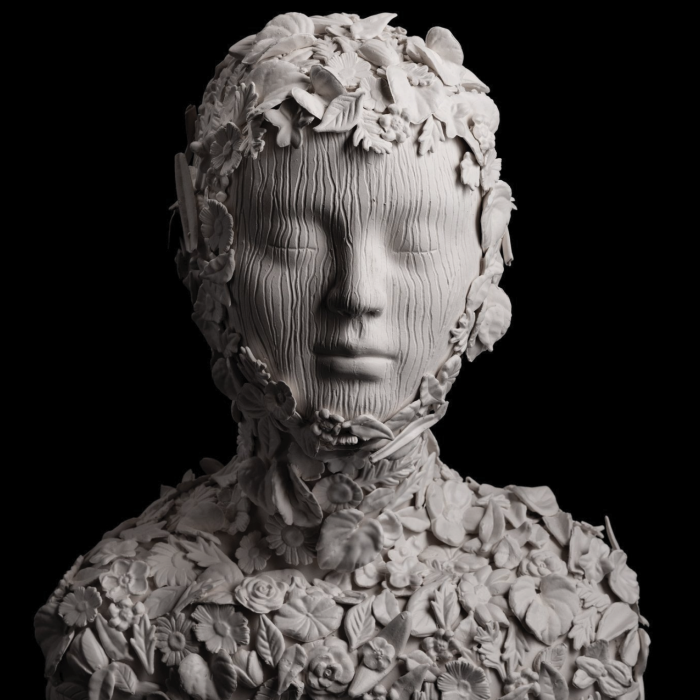
Black Man in a Black World – the Artists

Face Off II (detail), Archival Ink Jet Print, 30″ x 40″, 2014 by Larry Cook
Black Man in a Black World
September 2 – November 18, 2017
artwork | artists’ talk | the artist’s | film | music | press
Wesley Clark

I chose to use the human heart painted Black as a means of representing the Black body. The heart being the core of the body, the drum whose rhythm keeps us moving while Black Americans are the cultural, spiritual, and biological vanguard. The God Seed depicts the biological, giving us a black heart as the nucleus with golden barbed wire as electrons. This speaks to the origins of civilization as we know it; with all roots leading to Africa. While science has proven every human carries DNA strands of the Black woman, we know it takes two to populate – making the Black woman and man the Mother and Father of civilizations. (It would almost seem the Black man is intentionally left out of the equation).
Dark Matter takes us to the astrological tying in cultural and spiritual ties. In science dark Matter is both theoretical, and invisible as it does not reflect light, yet helps to explain things like gravitational forces. These invisible forces I place correlation to that of “soul” – the style and movements of Black men in particular. From the music we’ve created, to how we style our clothing, to the way we strut down a sidewalk, our soul is magnetic. It is an attracting force people worldwide gravitate toward with hopes to bask in the feeling and replicate for themselves. This desire to be entangled in our soulfulness I interpret almost as a form of worship. Dark Matter is presented to the viewer as a salvaged relic-like object—broken and missing pieces yet preserved and placed on display for all to see. The rusted and broken hinges give the sense that this three-part panel was once connected, possibly unfolding from the center, offering a visual presence reminiscent of alters in catholic churches.
Factualism is simply a meditation on whom and what Black men truly are. It is meant as the antithesis of what pop culture and the news m/entertainment media present us as. It’s an exercise in defining oneself and taking hold of one’s own agency. It’s the presentation of another set of facts not often put on display. The words and ideas are given to the viewer in the form of a crossword puzzle to help think about how these ideas intersect and build off one another, giving viewers a new set of images to aid contextualizing their thoughts on Black men.
Larry Cook
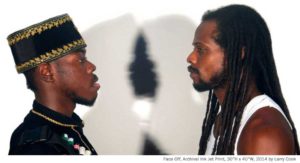
Do For Self and The Call pay homage to black liberation philosophies that arose out of organizations such as the Nation of Islam and the Moorish Science Temple. Each work references a sector of Black trade and industry that is a part of our cultural memory. In Do For Self, oil based colognes signify vendor customs established within the black community. In The Call, a reproduction of the Nation of Islam’s weekly The Final Call observes that recordings of personal histories within black community can equate to economic independence, self-worth, and empowerment.
Johnnie Lee Gray
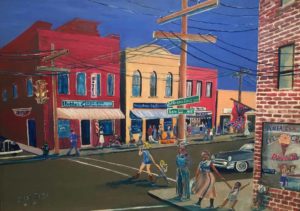
“Johnnie Lee Gray’s Paintings in the Context of Jim Crow” Book title: Rising Above Jim Crow: The Paintings of Johnnie Lee Gray. Published by New York Life. Excerpt from essay written by Gwen Everett, PH.D.
Arvie Smith
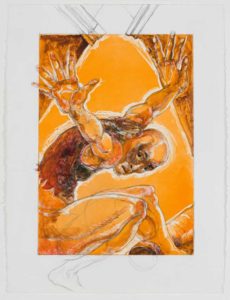
The exhibition Black Man in a Black World couldn’t be more timely, when demonstrations of bigotry and hate are assigned the moral equivalency of people fighting for human dignity, equality and justice for all members of the human family. African Americans and all marginalized people need to be heard, recorded and acknowledged for what they have endured, for their significance, and for their strength. Through my paintings I consider historical and contemporary truths attempting to reveal the dignity, endurance, and genius of African Americans hoping to evoke dialogue and reflection on implicit bias and resulting perpetrated injustices committed towards people of color in this country.
In this body of work, it is my intent to “flip” the role of the Black Man from the degradation of subservience to the triumphant role of hero using images traditionally assigned to white males.
The Fighter exemplifies the Black Man’s clash against oppression, degradation and exploitation. The daily assaults and dog whistle status reminders requires nothing less than emotional resistance, determination and resilience.
Minstrel’s Guide this black harlequin harks back to the 1500s as he moves into the viewer’s space to then morph into the minstrel of the 1800-1900s. Minstrels were derogatory characterizations, created by the dominant culture as entertainment to ridicule blacks after the Civil War.
Sampson Brings Down the House recalls the biblical image of a white curly locked Sampson tearing down the temple. Here it is flipped, showing a Black Sampson tearing down the house of injustice. It is my intent to show the strength and prowess of the Black Man in overcoming enormous odds.
Push Back depicts the strong Black male pushing back against racism, bigotry, hatred, inequities, prejudice, discrimination, white supremacy, etc., etc…..
Strange Tale is based on the mythology of Europa and Jupiter, here used to represent the “peculiar institution” of slavery and its aftermath.
The work Sampson and the Lion is based on the biblical story of Sampson slaying the lion that roared against him, flipped here to show a strong Black Sampson combating oppression.
Eric Telfort
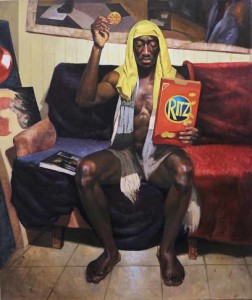
Growing up we feared for our lives. Dropping the wafers or chewing too fast would result in going to hell, so we would impersonate Jesus distributing the holy wafers, to practice receiving the Eucharist correctly. Ritz crackers were usually the practice food of choice to simulate the daunting experience, not to mention they were addictive. Since Jesus was white, according to Catholic imagery, a shirt was always used as a wig to help sell the idea of flowing hair.



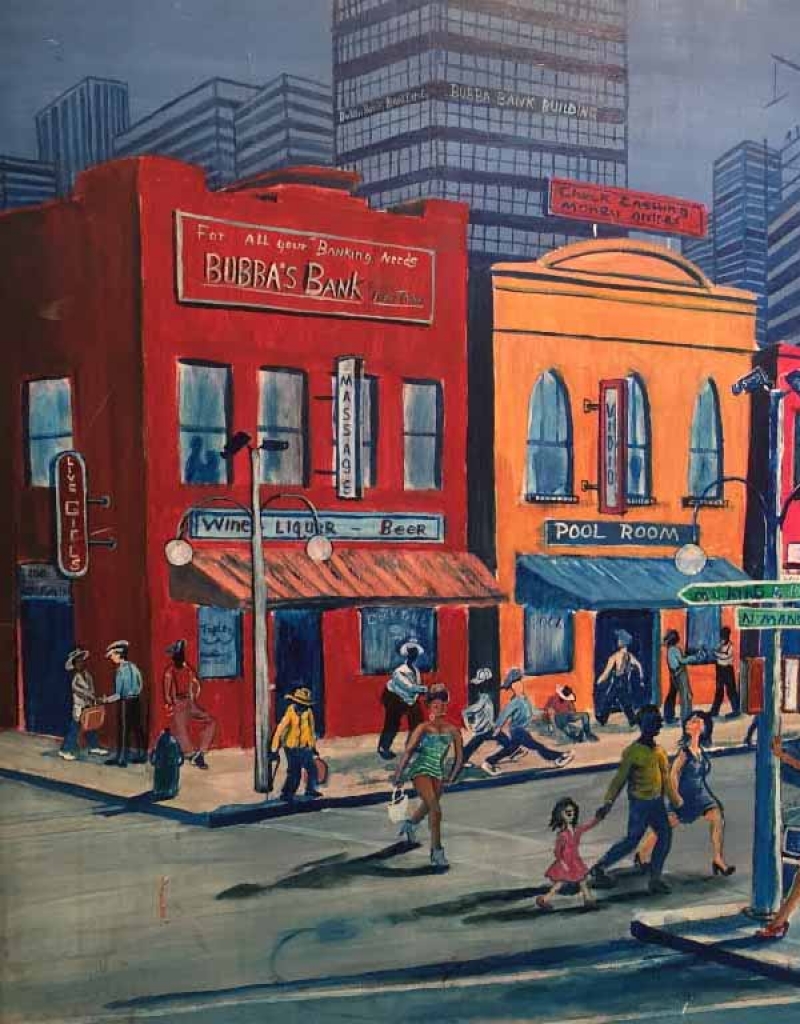

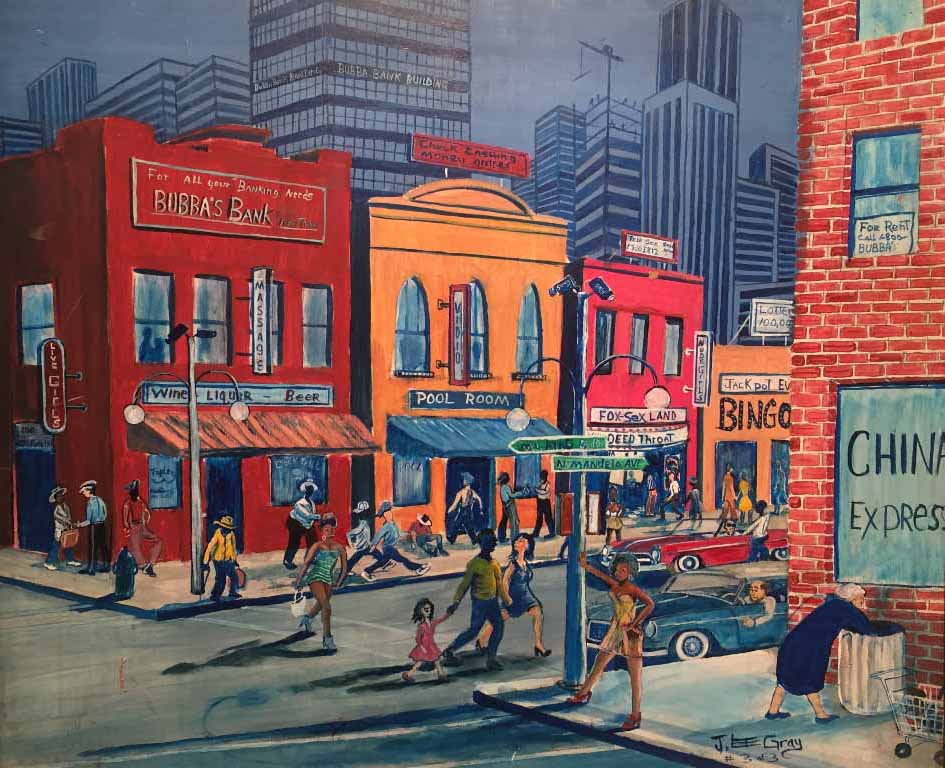

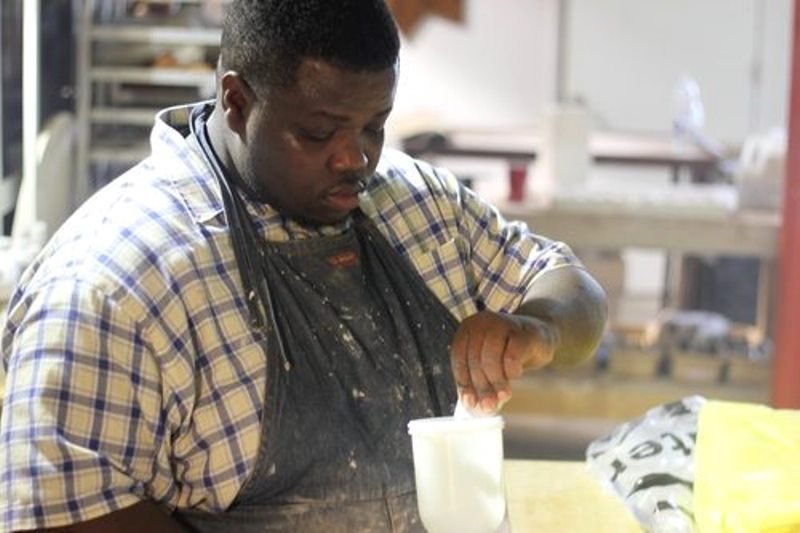 Morel Doucet (b. 1990, Pilate, Haiti) is a Miami‐based multidisciplinary artist and arts educator from Haiti. He employs ceramics, illustrations, and prints to examine the realities of climate gentrification, migration, and displacement within the Black diaspora communities.
Morel Doucet (b. 1990, Pilate, Haiti) is a Miami‐based multidisciplinary artist and arts educator from Haiti. He employs ceramics, illustrations, and prints to examine the realities of climate gentrification, migration, and displacement within the Black diaspora communities.